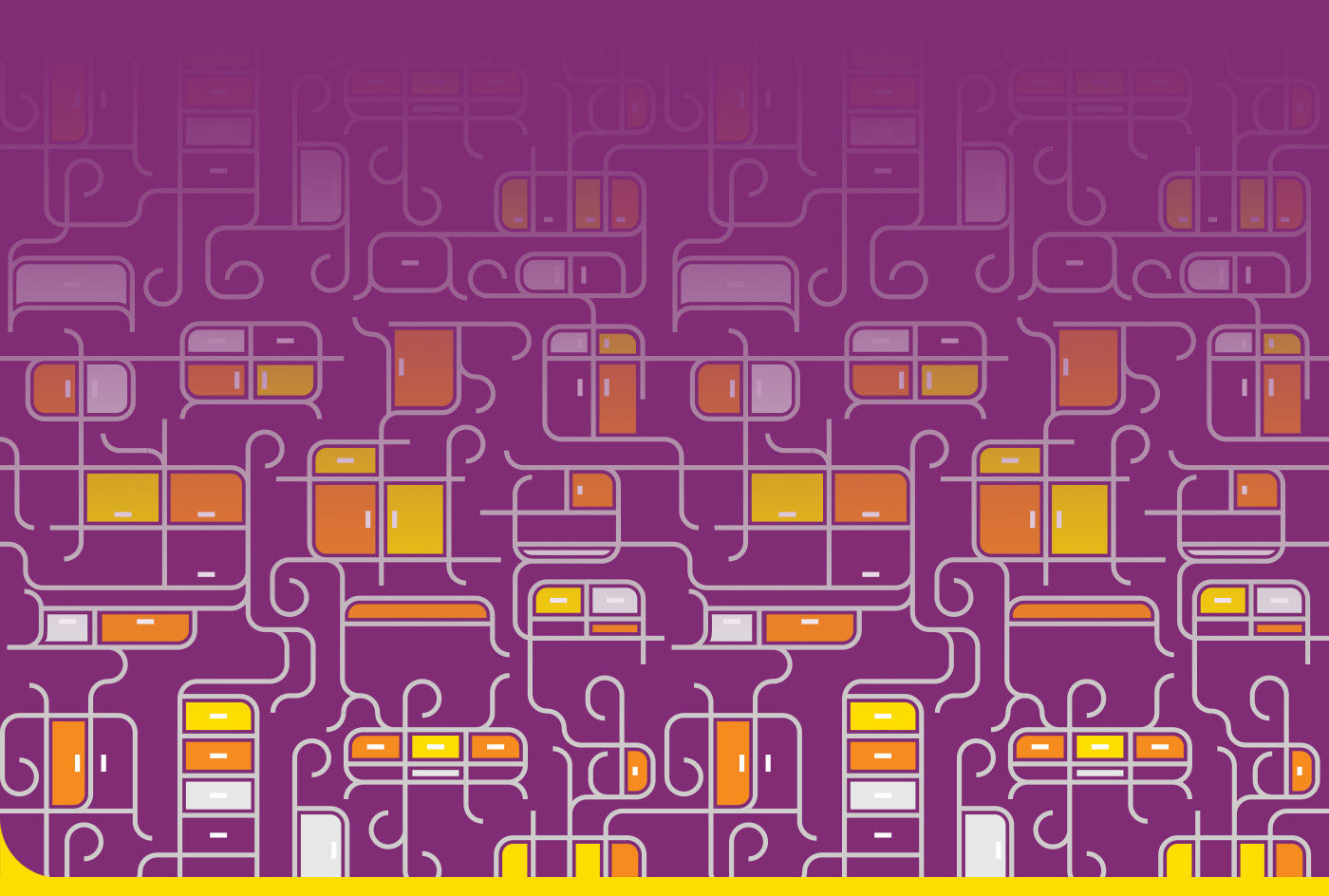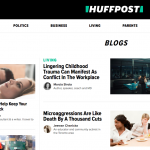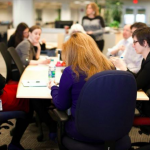Newsroom accessibility in a post-pandemic world
I had been told, in multiple interviews, some version of “We don’t hire people like you here,” so I could have been forgiven for having a sense of trepidation when I wheeled into The Carillon’s doors.
I needn’t have worried; it was one of the most relaxing interview atmospheres I’d ever been in. Not least because the hiring committee in front of me were making jokes at each other’s expense, and the person interviewing me was one of the first students I’d met when I’d come to the University of Regina a couple of years before. I would go on from that newswriter interview – I didn’t get the job, by the way, but that was largely due to the fact that I’d written my first news story the night before in a vague yet hopeful panic – to becoming the sports writer, then sports editor, and lastly the editor-in-chief. It hasn’t been swings and roundabouts the entire time. I once wheeled over the school’s athletic director’s feet after being bumped by a CBC reporter in a scrum and did the same to former MP Ralph Goodale while asking him questions about the 2015 election. But on the whole, I had a good run.
That’s not the experience many disabled journalists are lucky enough to have. We are forced to talk in back channels – much like the rest of disabled people in society – and have very little of a legal framework to fall back on. For one, the recently passed Accessible Canada Act, which only covers sectors under federal jurisdiction, allows the CRTC to set its own standards of what it deems accessible. The deadline it has to hit? 2040.
American resources like s.e smith’s Disabled Writers, Imani Barbarin’s Crutches and Spice, and Alice Wong’s Disability Visibility Project come up repeatedly as bright spots, but the system is not kind in a profession where we have been sold the lie of meritocracy. Some programs, like CBC’s Abilicrew Placements for Excellence Program – an initiative to, in their words, “… kick-start the careers of this traditionally under-represented group, eliminate barriers to their employment and showcase their talents” – are being implemented to increase diversity in the newsroom. Programs like this have a long way to go in order to address the structural inequality facing disabled journalists who, while also having to deal with foundational inaccessibility, also have to read and comment on pieces like a recent New York Times op-ed that positions disability as a burden in the eyes of an ethics writer. When traditional, mainstream outlets are publishing pieces that deny the agency of disabled people and position us as a burden, it is no wonder that we don’t find our way into their staff directories.
But the recent shift to work-from-home has shattered the illusion that driving to and from every story, every scrum, has to be a prerequisite for good journalism.
COVID-19 has proven that adaptation is possible, as local news anchors deliver broadcasts from their kitchen counters or produce radio segments from bedroom closets. But it remains to be seen whether the increased flexibility will continue to be afforded to journalists and whether this will mean an increase in disabled journalists in Canadian newsrooms.
Ableist barriers, says British Columbia-based journalist Paloma Pacheco, and what companies can do to alleviate them, are key to the future of disability representation in the field.
“I think journalism is still a very inaccessible and frankly ableist profession. If you think about the stereotype of a journalist it’s always unquestionably able-bodied: someone who is ready to hit the pavement to chase a story, someone who has unlimited energy and runs on caffeine, someone who can work 12-hour days six days a week and doesn’t need a full night’s sleep,” says Pacheco.
“All of these cultural ideas around what journalism is and who does it are only further strengthened by the realities of an industry that prides itself on a ‘work-as-passion’ mindset that often simply disguises overwork and no work-life balance. This may be fine and even enjoyable for some people, but for many disabled and sick journalists, it’s simply not an option. It creates barriers to entry for those that cannot adhere to that lifestyle but still want to do journalism.”
For Lauren Rollit, a journalist in Ottawa, one of her concerns is how her disability will be viewed in the newsroom and the negative physical impacts of pushing through in order to do what is expected of her in the industry. It’s a very real and legitimate fear for those who are entering the field.
“A big challenge for me is reconciling disability with the desire to seem ‘professional’ in the newsroom,” says Rollit. “Last year, for example, I fell and almost passed out at a press conference because of some pain I was experiencing. There were no reporters who were seated and I didn’t want to single myself out. I was also worried that sources would view me differently if I were the only one seated, especially as a young person without a visible disability. It was a situation that was difficult to navigate for me, in trying to figure out how to care for myself while still doing my job to the best of my ability.”
Passing out at a press conference just to get a quote – with so many scrums and political press conferences happening via tools like Zoom – means the shift to work from home has alleviated stress for many with disabilities, including those who were on my own staff at the University of Regina student newspaper. This short-term gain does not negate the fact that access barriers at internships and journalism schools – whether it be because of a need for a driver’s licence, the lack of pay precluding writers from applying, or the general fear that comes with trying to work in a profession that is actively resistant to your story – have proven themselves rampant. But the pandemic poses an opportunity for journalism programs to rethink what access looks like. As some news organizations across the country eliminated their internships, others adapted to sustain remote opportunities.
Zosia, the host of CKUT’s Avalanche – a show dedicated to disabled stories – says the issues they face are related to priorities and resources.
“For audio journalism, your priority is making sure your equipment works and your equipment is up to date, ideally. Things like buying text-to-speech software, buying pieces of equipment with braille on them, accessible desks for example, those aren’t No. 1 on people’s priority list when you’re barely trying to stay afloat in some certain cases,” they said. “There’s very little funding available.”
One issue they highlighted was that of “spoons,” a metaphor widely used in disability circles when referring to the limited energy many disabled people live with. Without the energy to tackle these ableist barriers, disabled journalists often burn out — I certainly came close a number of times. Whether it’s the perception that your intellectual ability is less than that of your peers, the frustration of having to adapt in order to do your job, or the needless questioning of your journalistic integrity when it comes to telling disabled stories, the pandemic has proven to many that these barriers are, at best, artificial; and, at worst, intentional. Many in the disabled community have expressed fear that the adaptations allowed now (work-from-home, telehealth appointments, increased delivery services, etc.) will evaporate once our society returns to some semblance of its regular rhythm. Zosia saw this in the nature of the funding available for a project that allowed ASL translation for CKUT programming.
“But that [project] was only made possible because of funding, because otherwise we simply did not have the resources to do that ourselves. Even, myself, for my own shows. It’s a very one-person thing and if I have the spoons to do a show that’s pretty much the end of my spoons. I don’t have spoons to transcribe it, I don’t have spoons or ability to make it into an ASL of Quebec Sign Language [LSQ] format. A lot of projects that cater to accessibility are funding based, which are usually one-off grants.”
Programs such as CBC’s Abilicrew, which offers 10 12-week placements for people with disabilities, promise limited positions across the country at the entry level. While this is a move forward, disabled journalists such as Accessible Media Inc.’s Dave Brown, host of radio show NOW with Dave Brown, feel as if the industry is still not allowing disabled people to rise to positions of power.
“Journalists, reporters, personalities with disabilities are maybe finding their way into the entry level, but running into a pretty significant glass ceiling above them. You’re not seeing the representation inside management and executive roles in media companies.”
So, how can we make Canadian newsrooms more accessible?
The journalists I spoke with say it comes down to concrete solutions to baseline problems. Remote work as a necessity, along with physical access to both equipment and space, were large talking points.
For Brown, accommodation meant preplanning, going so far as to memorize his radio scripts so that he didn’t have to rely on his limited vision to read the notification on the equipment for things like the names of songs or ad spots. Zosia spoke about remote work being an absolute priority, and Rollit focused on the fundamental need to communicate with disabled staff members.
“There’s a lot of individual changes that I think are beneficial: things like introducing flexible work hours, making assistive technologies available and considering mobility in the workplace,” says Rollit. “Fundamentally, though, I think newsrooms should prioritize conversations with journalists with disability in order to better understand the barriers they face, and to create concrete steps to accessibility in their organizations.”
As Brown puts it, “I think we’re seeing more stories about disability; I think that’s become more prominent. But I think we’re still not seeing enough front-facing people in the industry.”
Disabled people know how to adapt. Work-from-home procedures amid the COVID pandemic have proven that such adaptations can be made for everyone (not just disabled workers). But they need to be given the agency and the resources to craft accessible workflows for themselves.
For me, adapting at a weekly student paper meant formalizing remote work procedures. When I became EIC, the paper committed to using Dropbox as opposed to a wired server for all documents. I had to sit down and explain to my staff that, while I love the work environment that a student paper office provides, I did not expect them to spend every hour of their work in the office. Why? Because I couldn’t expect that of myself.
In my time at the paper, the non-profit created an emergency fund for staff, we created a scholarship program, and made donations to causes that were important to both our staff and our campus community. Our leave policy – if you need it then you take it – became less of an abstract construct and more of a tangible practice that was spoken about openly around the office.
I won’t pretend that I was a blameless boss; just go and email the masthead. But I think that the knowledge of disabled journalists allows us to integrate accessible workflows into our lives.
But there is so much more to do.
John Loeppky is a Regina-based freelance journalist who has written for FiveThirtyEight, Passage, Ricochet, and Briarpatch Magazine, among others.




